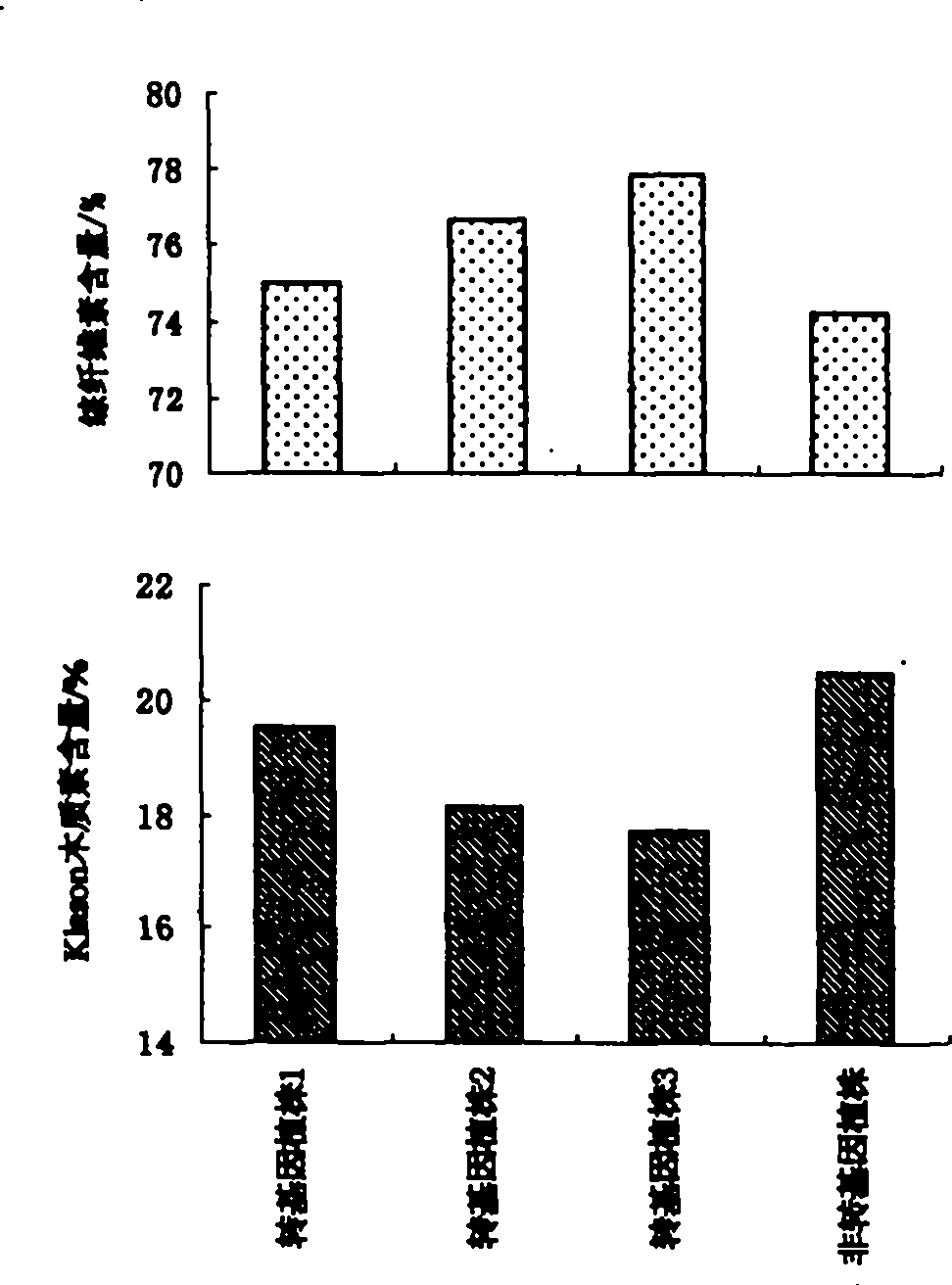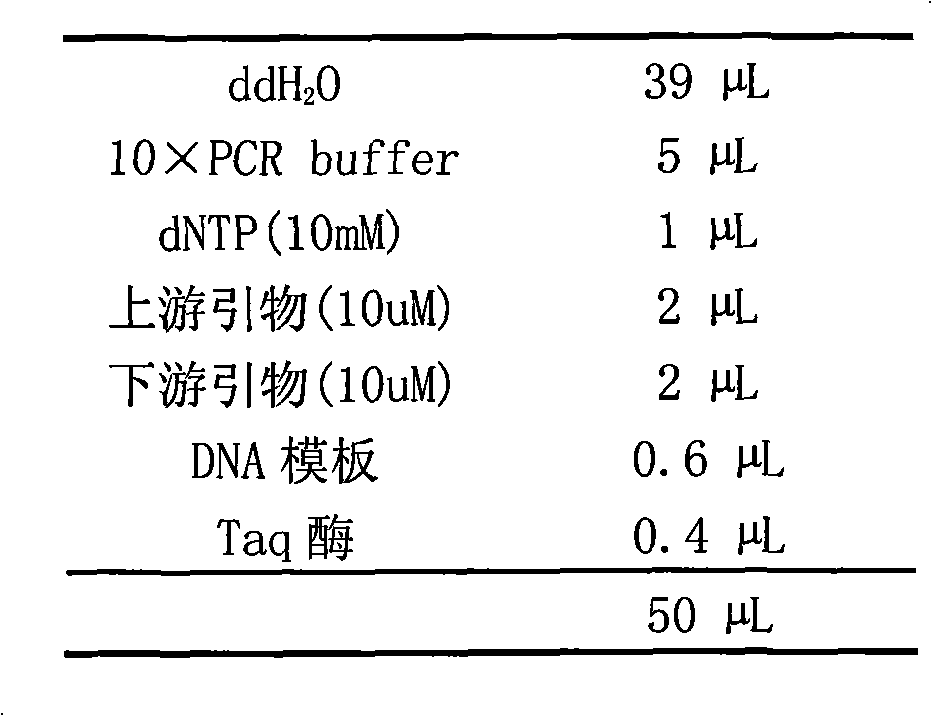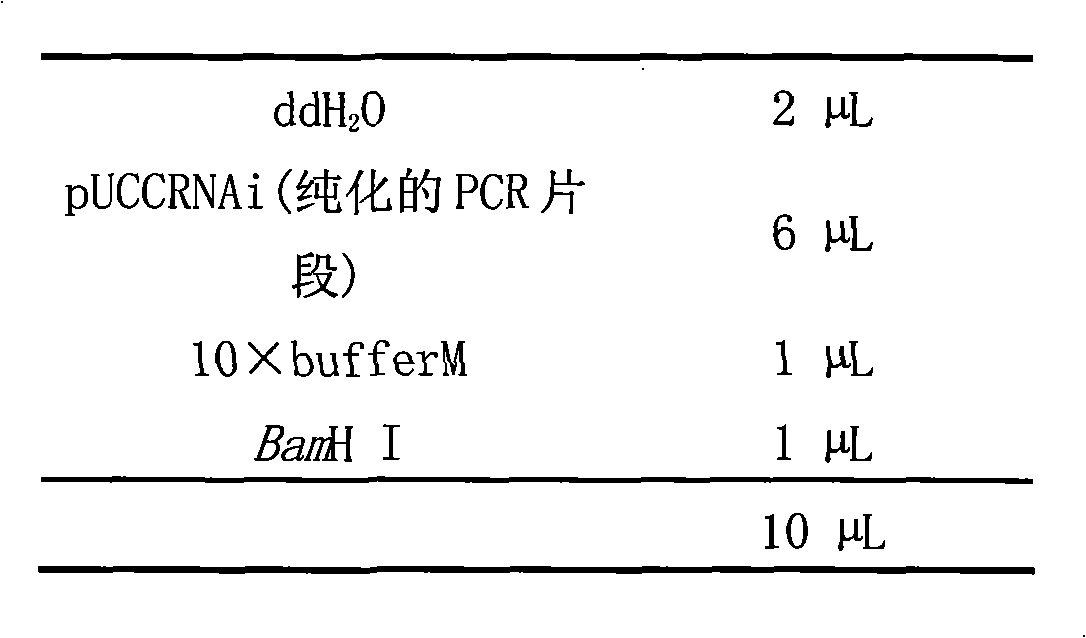Method for reducing the content of poplar lignin with RNA interference
A technology of RNA interference and lignin, applied in the field of reducing the content of poplar Klason lignin, can solve the problems of inability to knock out multiple gene families, inability to study in depth, lethal phenotype, etc., and achieve small impact, convenient agronomic traits, and RNA interference The effect of small fragments
- Summary
- Abstract
- Description
- Claims
- Application Information
AI Technical Summary
Problems solved by technology
Method used
Image
Examples
Embodiment Construction
[0022] 1. Obtaining CCR gene-specific RNAi fragments
[0023] 1.1 Extraction of Poplar Genomic DNA Using Improved CTAB Method
[0024] (1) Wash the leaves, remove the veins, weigh 1 g, add quartz sand, PVP (polyvinylpyrrolidone), and liquid nitrogen, grind them and put them into two 5mL Dorf tubes.
[0025] (2) Add 195 μL β-mercaptoethanol.
[0026] (3) Add 1950 μL of 1.5% CTAB (cetyltrimethylammonium bromide) and shake well.
[0027] (4) 65°C water bath for 20 minutes, gently shake once every 5 minutes.
[0028] (5) Add 1500 μL of chloroform / isoamyl alcohol (24:1) mixture, shake gently, and centrifuge at 10,000 rpm for 10 min.
[0029] (6) Take the supernatant, add 195 μL of 10% CTAB in a 60° C. water bath, 1950 μL of chloroform / isoamyl alcohol (24:1), and centrifuge at 10,000 rpm for 10 min. Repeat step 5 twice.
[0030] (8) Take the supernatant, add 195 μL of NaAc and 2600 μL of absolute ethanol, shake gently, and centrifuge at 10000 rpm for 5 min.
[0031] (9) Discar...
PUM
 Login to View More
Login to View More Abstract
Description
Claims
Application Information
 Login to View More
Login to View More - R&D
- Intellectual Property
- Life Sciences
- Materials
- Tech Scout
- Unparalleled Data Quality
- Higher Quality Content
- 60% Fewer Hallucinations
Browse by: Latest US Patents, China's latest patents, Technical Efficacy Thesaurus, Application Domain, Technology Topic, Popular Technical Reports.
© 2025 PatSnap. All rights reserved.Legal|Privacy policy|Modern Slavery Act Transparency Statement|Sitemap|About US| Contact US: help@patsnap.com



